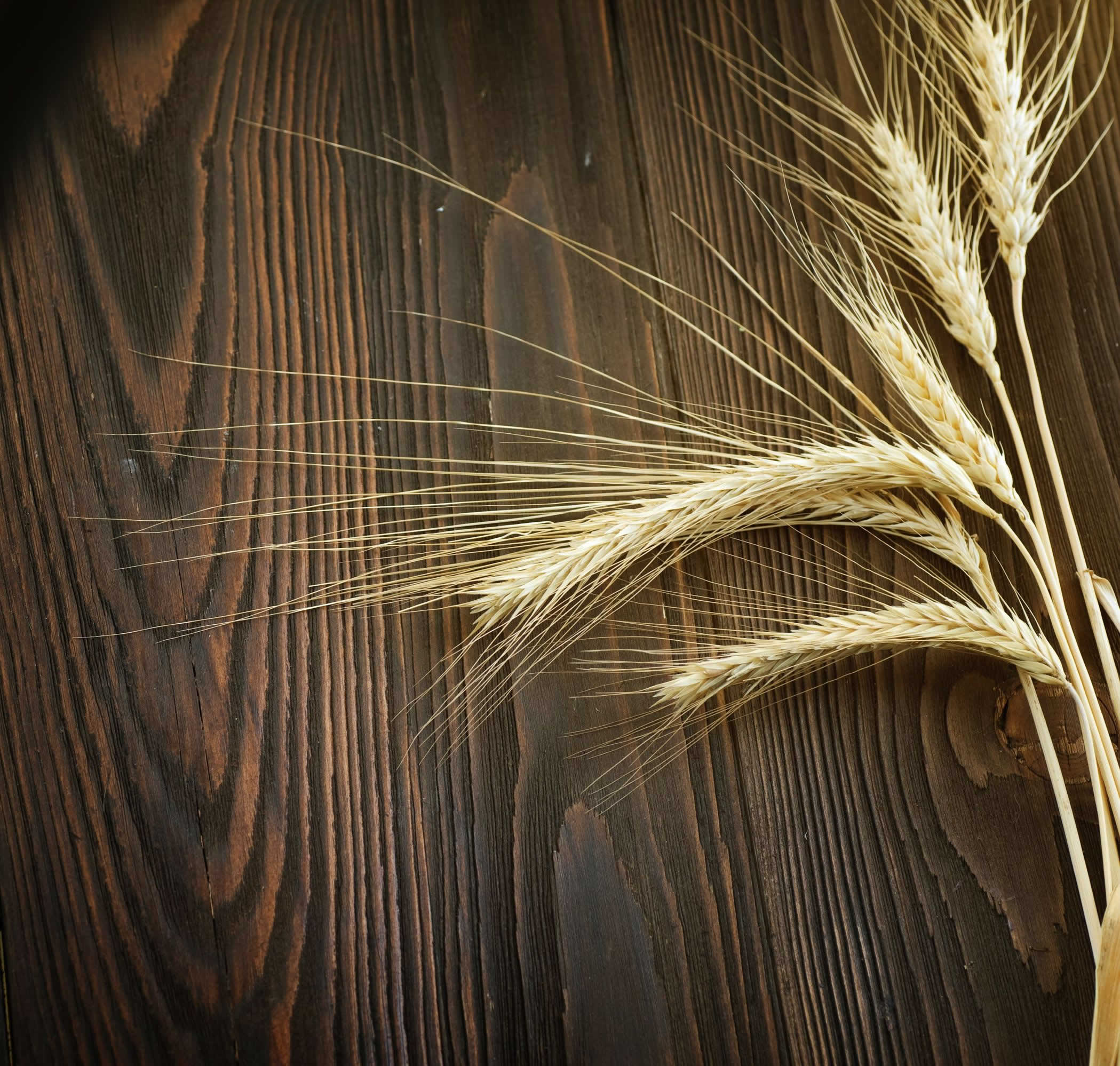PRODUCT LIST
Oats
- AAC BULLET
-
* White oats
* Very good yield
* Strong straw
- CANMORE
-
* Excellent yield
* Great standability
* Excellent test weight
- CDC ORRIN

-
* Execeptional Yield
* Exceptional standability
* High grain quality
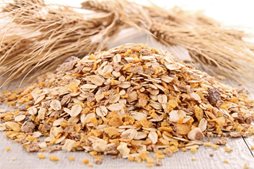
Hulless Oats
- CASINO
-
Excellent standability
Quick maturity
Excellent Test weight
- Gehl « Canadian rice »
- * Good standability
* Exceptionnal grain quality
* No Trichomes
- Idaho
- * Excellent performance in all areas
*Excellent crop quality
*Early maturity
- SHADOW
-
* Very good standability
* High test weight
- Turcotte
- * Exceptional yiel
* Contained in oil of more than 10%
* The earliest of all hulless oats
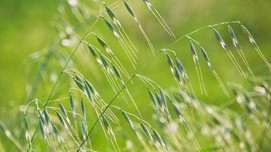
Forrage Oats
- CDC HAYMAKER
-
* High yield forage potential
* Good grain quality
* Heavy grain
- Nelson Maxi-Pré
- * Oats specially selected for its large leaves and its excellent performance in forage
* Outperforms other conventional oats for forage production
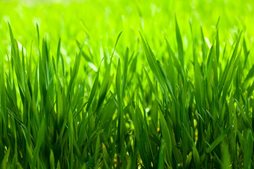
Barley 2 rows
- Island
- * Excellent yield
* Quality of grain without equal
* Best side for tolerance to Fusarium head blighti
- Newport
- * Exceptional yield
*Good standability
* Excellent tolerance to Fusarium head blight
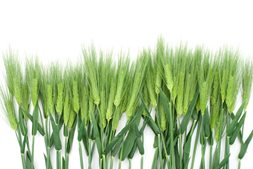
Barley 6 rows
- OAC BELWOOD
-
* Suited for all growing areas in Ontario
* Excellent lodging resistance
* Good kernel weight
- Tradition
- *Good yield
*Excellent specific weight
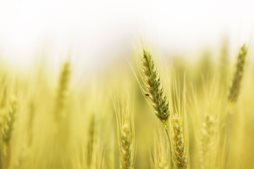
Malt Barley
- Bentley
- *Excellent yield
*Big grain
* Adapts well to all types of soil
- Newdale
- * Excellent yield in all areas
*Excellent straw yield
* Excellent tolerance to Fusarium head blight
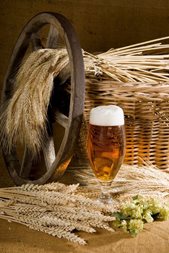
Spring Wheat
- AAC SCOTIA
-
* Very good fusarium tolerance
* Tall variety
* Big grain

- Easton
-
* High yield potential
* Good resistance to Fusarium
* Good straw volume

- Furano
- *Excellent yield
*High plant
*Good resistance to lodging
*Excellent tolerance to Fusarium head blight
*High protein
- KINGSEY
-
* Excellent yield
* Very good fusarium tolerance
* Big Grains

- Wilkin
- *Very good yield
*Short plant
*Very good lodging resistance
* Good tolerance to Fusarium head blight
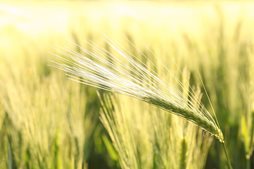
Winter Wheat
Hard Red

- Gallus
- *Top Yield
*Excellent winter survivability
*Short variety – Great standability
*Responds well to high management*Excellent winter survival

- Princeton
- *Excellent yield
*Medium hight
*Stands well
* Good tolerance to Fusarium
Soft Red

- CM614
- *Excellent yield
*Medium to tall height
*Stands well
* Good tolerance to Fusarium
*Excellent winter survival

- Drew
-
* It Stand and it yields
* Great winter survival
* Performs well across multiple soil types

- WB425
-
*Excellent yield
*Medium height
*Stands well
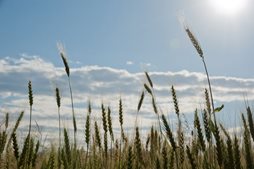
Winter Rye
- AC Hazlet
- *Good yield
*Medium height
*Stands good
*Excellent winter survival
- Danko
- *Excellent yield
*Stands well
*Excellent disease resistance
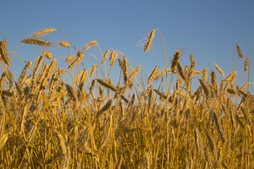
Forage Wheat
- ROCKET
-
* Early
* Great Yield
* Excellent test weight
Flax
- CDC Bethune
- *Excellent yield
*Stands very well
*Medium height
*Rust resistance
*Good fusarium resistance
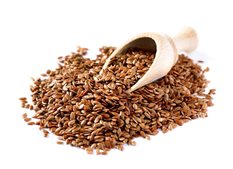
Buckwheat
- AC Manisoba
-
*Medium height plant
*Bigger grain than average
*Very good yield potential
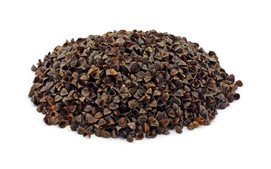
Triticale
- Proghorn
-
*Good resistance to leaf rust
*Good potential yield for silage
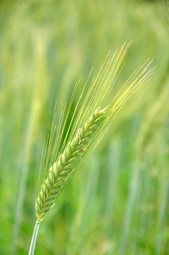
Conventional soybean 
Clear Hilium
- OAC STRIVE – 2650 HU
- New variety with higher performance and protein. Adapts well to all types of soil. Best results at 7’’and 15’’.
Gray Hilium
- OAC PRESCOTT – 2725 HU
- New complementary variety to OAC Wallace with higher yield and protein levels. Great choice for the NON-GMO market. Does well in all soil types.
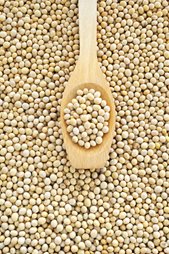
Roundup Ready Soybean 

- MAHONY R2 – 2350 HU
-
* Early maturity
* Bushy plant
* Adapts well to all soil types
- ALTITUDE R2 – 2725 HU
-
* Hightest yielding for its maturity
* Adapts well to all soil types and row spacing
- OAC CHALLENGER R2 – 2775 HU
-
* Excellent lineup developed with Guelph University
* High formation of pods
* Adapts well to all soil types and row spacing
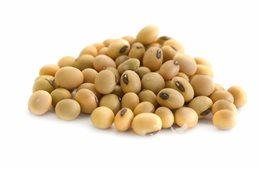
Roundup Ready 2 Xtend Soybeans 

- EXCURSION R2X – 2650 HU
-
* Variety combining early maturity, yield and agronomic qualities
* Tall plant
* Adapts well to all soil types and row spacing
* Great disease resistance
- EXPEDITION R2X – 2700 HU
-
* Above average white mold tolerance
* Medium height
* Narrow rows, light soil

Green Fertilizer 
-
Oriental mustard
Oilseed radish
Tillage radish
Forrage turnip
Intercropping Crops 
VITALI-T LINE
- MIX INTER -1
-
* Pure red clover
* Seeding rate 6 to 7 lbs/ac
- MIX INTER - 2
-
* Red clover + Huia white clover
* Seeding rate 6 to 7 lbs/ac
- MIX INTER – 3
-
* Red clover and Alsike Clover
* Seeding rate 6 to 7 lbs/ac
- MIX INTER – 4
-
* Alsike Clover and Berseem Clover
* Seeding rate 6 to 7 lbs/ac
- MIX INTER – 5
-
* Red Clover & Alsike Clover & Annual Alfalfa
* Seeding rate 6 to 7 lbs/ac
- MIX INTER – 6
-
* Fabio Ryegrass and red clover
* Seeding rate 16 to 18 lbs/ac
Forage Plants
| Varieties | |||||
| Alfalfas | AC Brador | ||||
| Stronghold HQ | |||||
| Runner | |||||
| Sansar | |||||
| Stockpile | |||||
| 2010 | |||||
| P-I : Pré-inoculé | |||||
| Clovers | Raven | ||||
| Santa Fe | |||||
| Blanc Glacier | |||||
| Timothy | Ovation | ||||
| Summergraze | |||||
| Bromegrass | Carlton | ||||
| Fleet (meadow) | |||||
| Matua (meadow) | |||||
| Orchardgrass | Amba | ||||
| Benchmark+ | |||||
| Baridana | |||||
| Perun | |||||
| Fojtan | |||||
| Ryegrass | Aubade annual (WW) | ||||
| Fabio annual (I) | |||||
| Mara (Perenial) | |||||
| I :Italien; WW : Westerwold | |||||
| Fescue | Barolex FS | ||||
| Select | |||||
| bird's Foot | Bruce | ||||
| Léo | |||||
Forage Mix 
- MILK BOOSTER
- Mix of Triticale, climbing forage peas and a forage type 6 row barley
- SEM-2
-
* This is an excellent fit for poorly drained or variable soils with the branch rooted trait od the alfalfa ensuring an uniform stand and an ability to adapt to varying soil conditions with excellent resistance to winter heaving.
* 70% 2010 BR Alfalfa + 20% Ovation Timothy + 10% Ac Killarney Ochardgrass
- SEM-3
-
* A perfect hay choice for the dairy producer who demands the best quality in feed and consistent optimum yields. The festulolium ensures season long energy with excellent early middle and late season performance
* 70% Stronghold HQ Alfalfa + 15% Ovation Timothy + 12% Perun Festulolium + 3% California Ladino Clover
- SEM-40
-
* Dependable forage under poor conditions. Unlike alfalfa the quality of Bruce Trefoils does not decline at flowering
* 80% Costed Bruce Trefoil + 20% Ovation Timothy
- SEM-45
-
* Makes excellent haylage in areas where Alfalfa winterkill is a problem, red clover better tolerates imperfect drainage and lower pH levels, and can be grown in fields that are too wet or acidic for alfalfa.
* 40% Santa Fe Double cut red clover + 45% Summeergraze Timothy + 10% Perun Festulolium + 5% California Ladino Clover
Mélange Céréales 
- MAXI-SILE
-
* 50% avoine Nelson fourragère et 50% pois fourrager
* Taux de protéine supérieur à l’avoine fourragère Nelson seule
* L’ajout de poids permet de maintenir la qualité si la récolte est retardé
* Taux de semis
* Culture intercalaire: 90lbs/acre
* Seul: 145 lbs/acre
- MS TRIPPER
-
* 50% pois fourrager et 50% Triticale
* Taux de semis
* Pure : 145 lbs/acre
* Plante abri : 90 lbs/acre
- SEMI 262
-
* 20% Avoine Canmore + 60% Blé AAC Scotia + 20% Pois Meadow
* Taux de semis
* Pure : 175 lbs/acre
* Plante abri : 145 lbs/acre
- SEMI 25
-
* 25% Orge Tradition + 25% Pois Meadow + 25% Avoine Canmore + 25% Blé AAC Scotia
* Taux de semis
* Pure : 165 lbs/acre
* Plante abri : 130 lbs/acre
- SEMI 525
-
* 50% Blé AAC Scotia + 25% Avoine Turcotte + 25% Avoine Canmore
* Taux de semis
* Pure : 145 lbs/acre
* Plante abri : 115 lbs/acre
- SEMI 640
-
* 60 % Blé AAC Scotia + 40 % Avoine Canmore
* Taux de semis
* Pure : 155 lbs/acre
* Plante abri : 125 lbs/acre
Optimum High Performance Mix 
| Optimum High performance | Characteristics | ||
| Stockpile Alfalfa | |||
| Opti-Pro | 90% Alfalfa | Stability, persistence and yield apply to this high performance alfalfa. Produces high quality forage with fast recovery and excellent disease resistance. Option to combine with grass Max mixtures. | |
| 10% Summergrase Timothy | |||
| Opti-Plus | 80% Alfalfa | ||
| 20% Summergrase Timothy | |||
| Opti-Plant | 70% Alfalfa | ||
| 30% Summergrase Timothy | |||
| STRONGHOLD HQ | |||
| Opti-Pro | 90% Alfalfa | High performance, highly digestible alfalfa with exceptional yield and quality. Excellent disease resistance and regrowth. Ideal for maximising your feed protein levels. Option combine with grass Max mixtures. | |
| 10% Summergrase Timothy | |||
| Opti-Plus | 80% Alfalfa | ||
| 20% Summergrase Timothy | |||
| Opti-Plant | 70% Alfalfa | ||
| 30% Summergrase Timothy | |||
| 2010 BR | |||
| Opti-Pro | 90% Alfalfa | A branch rooted alfalfa for poorly drained areas or variable soils. Combines well with Grass Max mixtures in these conditions. | |
| 10% Summergrase Timothy | |||
| Opti-Plus | 80% Alfalfa | ||
| 20% Summergrase Timothy | |||
| Opti-Plant | 70% Alfalfa | ||
| 30% Summergrase Timothy | |||
MAX MIXTURES 
| MIXTURES | CHARACTERISTICS | |
| Brome-Max | 50% Ac Knowles Brome Hybrid | Ideal for long rotations with the quality of Hybrid brome |
| 25% Fleet Meadow Brome | ||
| 25% AC Rocket Bromegrass | ||
| Fescue-Max | 65% Brome-max | For a maximum boost in alfalfa at 5-6 lbs/acre |
| 35% Kokanee Tall fescue | ||
| Hay-Max | 60% Brome-max | Impressive leaf volume when used in a regime of internsive cutting |
| 20% AC Nordic Orchard grass | ||
| 20% Kokanee Tall Fescue | ||
| Pasture-Max | 65% Brome-max | Effectively increases the volume of fibre in the ration |
| 20% Quartermaster ann. Ryegrass | ||
| 15% Kokanee Tall Fescue | ||
| Forage-Max | 70% Brome-max | Assures forage volume when seeded with Alfalfa |
| 15% Kokanee Tall Fescue | ||
| 15% Aubage annual Ryegrass | ||
| Festulo-Max | 40% Brome-max | Assures Good forage volume and nutritional value |
| 30% Fojtan Festulolium | ||
| 30% Perun Festulolium | ||
| Rye-Max | 85% Brome max 15% Aubade Ryegrass |
Long rotation for establishment of cover crops. Great hay for horses |
OPTIMUM MIX 
| NAME | MIX | CHARACTERISTICS |
| OPTI-milk | 75% stronghold HQ Alfalfa 25% Summergrase Timothy |
A balance of protein and energy for good soils and can be combined with grass mixtures |
| Opti-Hay | 20% Stronghold HQ Alfalfa 20% Stockpile Alfalfa 20% 2010 BR Alfalfa 40% Summergrase Timothy |
Mixtures of 3 Alfalfas, perfect for uneven fields and variable soils |
| Opti-Green | 60% Stronghold HQ Alfalfa 40% Summergraze Timothy |
Traditional mix for dry hay or silage with the nutritional quality of Radiance |
| Opti-Choice | 20% Stronghold HQ Alfalfa 20% 2010 BR Alfalfa 15% Santa Fe Red Clover 45% Summergrase Timothy |
Specially designed for low lying poorly drained fields |
| Opti-Mix | 30% Stronghold HQ Alfalfa 20% AC Brador Alfalfa 50% Summergrase Timothy |
Mixture for long rotations and multi usage |
| Opti-Park | 10% Ladino white clover 30% Bruce trefoil 60% Summergrase Timothy |
Multipurpose mixture for silage or pasture |
| Opti-Timothy | 30% AC Brador Alfalfa 70% Summergrase Timothy |
Ideal for dry hay and long rotations |
| Opti- Field | 50% Santa Fe red clover 50% Summergrase Timothy |
Perfect mix for soil with poor drainage and Acidic pH |
| Opti-Clover | 55% Santa Fe Red Clover 45% Summegrase Timothy |
Ideal for round bales |
| Opti-Canton | 40% Santa Fe Red clover 5% Ladino white clover 55% Summergrase Timothy |
A clover timothy mix with a little ladino white clover for persistance |
| Opti-Meadow | 25% Ladino white clover 75% Summergrase Timothy |
Multipurpose mixture for silage or pasture |
| Opti-Pasture | 10% Huia White Clover 5% Ladino white clover 25% Summegrase Timothy 21% Carlton Brome 10.5% Fleet Meadow Brome 10.5% Matua Meadow Brome 9% Kokanee Tall fescue 9% Mara Ryegrass |
Pasture mix for cattle conceive to give volume forage in quantity and quality all season long. Small grains will come separate from the other ones. |
| Opti-Horse | 5% Huia White Clover 2% Ladino white clover 25% Summergrase Timothy 25% Fleet Meadow Brome 15% Kentucky pasture 14% Carlton Brome 14% Mara ryegrass |
Horse pasture mix that will resist to intensive stepping and grazing. Small grains will come separate from the other ones. |
Intercropping Information
SPECIES
Single-cut red clover – Double-cut red clover
Red Clover is a popular specie in intercropping. It offers an appealing fall cover. It generally doesn’t affect cereals but might be risky during a wet year.
Concerning the choice of mixtures, you will have to choose your type of red clover based on your situation.
Since the single-cut red clover is less aggressive at first, it will be used in less competitive crops such as barley and mixed grain or in fall crop whose survival in the spring will be medium.
On the other hand, double-cut red clover, whose establishment is rapid, will be used in oats and wheat crops or in a fall crop with an excellent recovery.
Being winterhardy, special attention to its destruction should be ensured. In conventional form, glyphosate alone won’t always be strong enough to destroy it completely. If the next crop is soybean, it should be completely destroyed in the fall. In organic management, the soil preparation in the fall should be aggressive; tillage should ensure its destruction.
Fabio Ryegrass
The Italian Ryegrass with its abundant root system will contribute to improve your soil structure and the bearing capacity of your agriculture machinery. It will also reduce the loss by leaching by recuperation excess nutrients. Being non winterhardy, the ryegrass can sometimes survive and may need to be destroyed in the spring. Preferring cool and humid conditions, the planting during hot and dry summer is risky.
Huia Clover
Huia clover is a white clover which, unlike ladino, stays small in size. Once it is firmly seeded, it can withstand drought. It reproduces through stolons, a soil preparation to bring them to the surface should be enough to destroy them.
Alsike Clover
Alsike clover has height situated between the previous two varieties, red and white clover. Its taproot is less deep than those of the red clover.
Berseem clover
Berseem clover is relatively new on the market thought it’s now more accessible in Canada. Annual specie with a fast growth, it differentiates itself by its capacity to be destroyed. During a wet year. Its size can be as tall as cereals.
Annual Ryegrass
Annual alfalfa is not frequently used. Being annual, its destruction will be simpler than with a perennial variety. Its taproot is deeper than those of the red clover, which gives it drought resistance. Its mineralization speed could also be different, but more studies should be made.
Establishment procedures and times
Spring cereals :
The seeding is done at the same time as the cereals. A Seeding done at heading time is also possible. The seeding can be done in a small grain box or mixed with cereals via the filling auger. Note that we don’t systematically recommend to broadcast. If possible, a light soil preparation is strongly recommended to ensure establishment. The seeding rate should be increased 15%.
Fall Cereals :
Cover crops can be planted in the form of overseeding early in the season with a 4 wheeler. This method will help with uniform filling due to winter.
Corn:
For conventional management, the seeding is done after the last herbicide application. It is important to consider the chosen herbicide, which can affect the clover establishment.
Destroying the cover crop
It is strongly recommended to destroy the cover crop in the fall. This will facilitate a more equal seedbed in the spring and reduce nitrogen loss due to its mineralization. A spring destruction could also cause late mineralization in clay.



